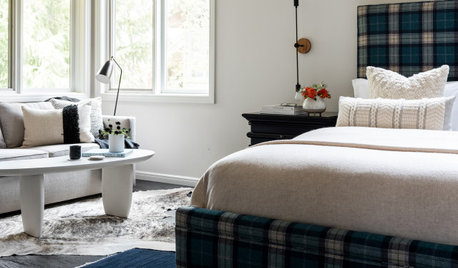floor repair nightmare
jtomko
13 years ago
Related Stories

BATHROOM TILEQuick Fix: Repair Cracked Bathroom Grout
Banish an eyesore and safeguard your bathroom from water damage in 30 minutes or less with this DIY repair
Full Story
HOUSEKEEPING7-Day Plan: Get a Spotless, Beautifully Organized Bedroom
Create a sanctuary where you can relax and dream without the nightmare of lurking messes
Full Story
SELLING YOUR HOUSEFix It or Not? What to Know When Prepping Your Home for Sale
Find out whether a repair is worth making before you put your house on the market
Full Story
HOUSEKEEPINGProtect Your House From Winter Water Damage
Avoid costly repairs by learning to spot potential problem areas before water damage is done
Full Story
REMODELING GUIDESWhen to Use Engineered Wood Floors
See why an engineered wood floor could be your best choice (and no one will know but you)
Full Story
MATERIALSWhat to Ask Before Choosing a Hardwood Floor
We give you the details on cost, installation, wood varieties and more to help you pick the right hardwood flooring
Full Story
FLOORSWhat to Ask When Considering Heated Floors
These questions can help you decide if radiant floor heating is right for you — and what your options are
Full Story
FLOORS5 Benefits to Concrete Floors for Everyday Living
Get low-maintenance home flooring that creates high impact and works with home styles from traditional to modern
Full Story
REMODELING GUIDESDesigner Confessions: Torn Between Wood Floors
19 Photos to Help You Choose a Wood Floor Finish
Full Story
REMODELING GUIDESContractor Tips: Smooth Moves for Hardwood Floors
Dreaming of gorgeous, natural wood floors? Consider these professional pointers before you lay the first plank
Full StorySponsored
Columbus Area's Luxury Design Build Firm | 17x Best of Houzz Winner!
More Discussions








jtomkoOriginal Author
liriodendron
Related Professionals
Arlington Kitchen & Bathroom Designers · Fresno Kitchen & Bathroom Designers · Haslett Kitchen & Bathroom Designers · Midvale Kitchen & Bathroom Designers · Schaumburg Kitchen & Bathroom Designers · Wentzville Kitchen & Bathroom Designers · Wood River Kitchen & Bathroom Remodelers · Citrus Park Kitchen & Bathroom Remodelers · Elk Grove Kitchen & Bathroom Remodelers · Gardner Kitchen & Bathroom Remodelers · Lynn Haven Kitchen & Bathroom Remodelers · Port Angeles Kitchen & Bathroom Remodelers · Fairmont Kitchen & Bathroom Remodelers · Ken Caryl Architects & Building Designers · Troutdale Architects & Building Designerssombreuil_mongrel
brickeyee
macybaby
sombreuil_mongrel
User
brickeyee